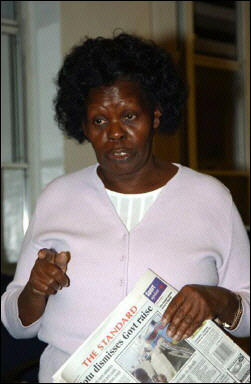I want to talk directly to my Kalenjin brothers and sisters. Perhaps no other community is more demonised in Kenya today than the Kalenjin Nation.
I have heard Kalenjins described as “Kenyan Hutus” because of their implied complicity in the “ethnic clashes” in the Rift Valley in 1992, 1997, and the post-election violence in 2008. It does not help matters that former President Daniel arap Moi and Minister William Ruto, two rabid anti-reformers, are seen as the leaders of the Kalenjin Nation.
But I want to plead for balance, and argue that our Kalenjin brethren are no better – or worse – than the rest of us. Appearances can be deceptive.
Let me first deal with an inconvenient political fact. The Kalenjin gave Kenya the heroic Koitalel arap Samoei, the legendary Nandi anti-imperialist who was tricked and cowardly murdered by British colonialists. But that nugget of history is often forgotten.
Unfortunately, the Kalenjin elite are known mostly for collaborating with repressive governments. They worked hand-in-glove with colonialists. Mr Moi is exhibit number one. Upon independence, Mr Moi helped Mzee Jomo Kenyatta crush Jaramogi Oginga Odinga and build a de facto one-party state. Jean-Marie Seroney, the great democratic reformer, was the lone exception. In 1978, Mr Moi ascended to the throne upon Mr Kenyatta’s demise and perfected the rogue state. Until 2002, when Mwai Kibaki and Narc ousted Kanu from power, the Kalenjin elite had always been part of the state. The heyday of the Kalenjin elite came during Mr Moi’s 24 years in power. He purged the Kikuyu from the senior ranks of the bureaucracy. He placed a Kalenjin face atop virtually every important national institution.
The Kalenjin elite became the “owners” of the State. It was during Mr Moi’s rule that Kenya reached a nadir. The economy collapsed, corruption became a national cancer, and Kenya became a closed police state. Kenyans blamed the sordid mess on the Kalenjin Nation. They did not distinguish between the Kalenjin elite and the Kalenjin hoi polloi.
The reality is that the Kalenjin masses have almost nothing in common with the Kalenjin elite. But the elite use the masses to bargain for power and resources. The elite have amassed their wealth on the backs of the Kalenjin poor. Many parts of the Rift Valley are still in the Stone Age. Baringo itself, Mr Moi’s home turf, is a study in poverty and neglect. Man-made famines strike the poor with an alarming frequency.
Yet the Kalenjin elite have managed to dupe the masses that their fates are intertwined. Touch Mr Ruto or Mr Moi and they will cry that “their people” are being “finished.” This is not unique to the Kalenjin Nation. All Kenyan masses have similar exploitative relationships with their elites.
But there is an interesting psychology at work among the Kalenjin. Perhaps this is true of other communities. The Luo Nation has historically supported the Odingas on most matters. The Kikuyu Nation, while it is loath to adore a single baron, has never supported an outsider for State House. In 2007, the Kamba Nation voted overwhelmingly for Kalonzo Musyoka for president. But I have noticed a distinction with the Kalenjin masses. They are held hostage by a tiny kleptocracy that preaches fear.
The Kalenjin elite – and Mr Moi and Mr Ruto are most guilty – have fostered in the Kalenjin poor a siege mentality. This goes back to the 1990s when Mr Moi, then president, declared the Rift Valley a “Kanu zone’’.
This sense of “apartness” by the Kalenjin masses aggrieves me. Mr Moi and Mr Ruto are once again using scare tactics to isolate the Kalenjin Nation so that it votes against the proposed constitution. They seem to be succeeding if recent polls are to be believed. The two ‘No’ campaigners have resorted to misinformation and fear-mongering. They claim – mischievously – that Kalenjins will lose their land under the new constitution. Throw in kadhis’courts, abortion, and devolution and you have a potent brew of misinformation.
The sad thing is that the Kalenjin Nation seems to be drinking all of it up. How can Mr Ruto’s grip of the Kalenjin be broken? Can Mr Moi, the political dinosaur, be expunged from Kalenjin consciousness?
This is my challenge to the Kalenjin Nation. You can only be captive to ethnic demagogues if you allow them. Do not permit yourselves to be isolated from the rest of Kenya by an elite that is more interested in its survival than in yours. Your fate – and future – lies with the rest of Kenya. Do not allow the Rift Valley to be turned into a Bantustan for the benefit of a tiny minority that has never done much for you.
On August 4, the rest of Kenya will vote to approve the proposed constitution. Do not acquire the stigma of the only community to have voted against the rebirth of Kenya. I hope you will decide that your identity as Kenyans is more important than the interests of a few ethnic barons.



Comments